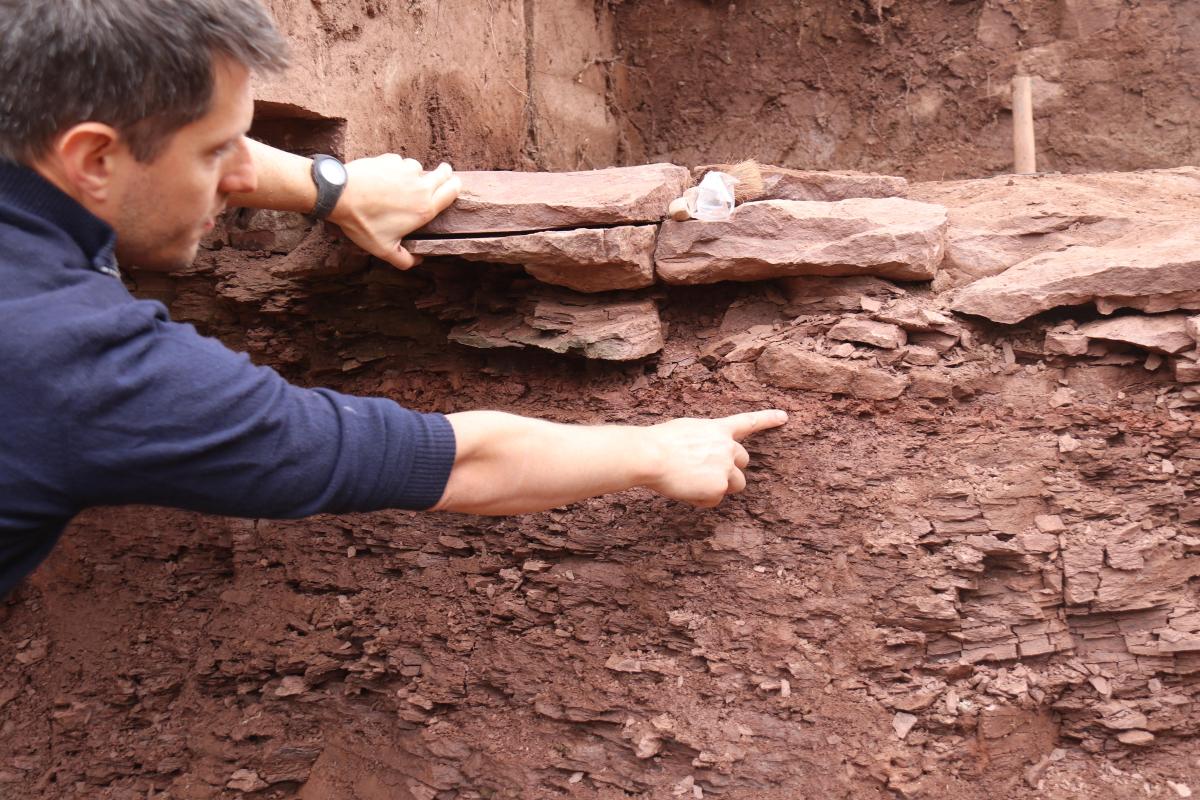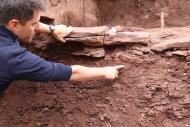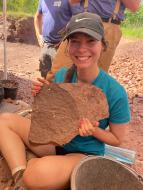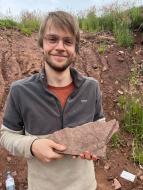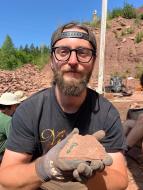This year's June excavation at the world-famous Bromacker fossil site in Thuringia was once again a complete success and produced some great finds. A bone layer, small skeletons and an ash layer suitable for age determination promise new insights into the 290-million-year-old ecosystem from the Bromacker. Over 1400 visitors took the opportunity to exchange ideas with the researchers. The Museum für Naturkunde Berlin, the Friedenstein Foundation Gotha, the Friedrich Schiller University Jena and the UNESCO Global Geopark Thuringia Inselsberg - Drei Gleichen are involved in the project.
The Bromacker in the Thuringian Forest is one of the world's most important fossil sites for early land vertebrates and their habitat. An international research team, consisting of geology and palaeontology experts, including students, technical staff and science communicators, has been excavating at the Bromacker for several weeks every year since 2020. The exceptionally well-preserved fossils from the early Permian 290 million years ago allow conclusions to be drawn about the evolution of early tetrapods, insects, millipedes, prehistoric crustaceans and plants, for example. Participating in the project are the Museum für Naturkunde Berlin, the Friedenstein Foundation Gotha, the Friedrich Schiller University Jena and the UNESCO Global Geopark Thuringia Inselsberg- Drei Gleichen.
Around 50 researchers from six countries took part in this year's excavation, which took place in June. A total of 233 fossils were recovered this year. Project and excavation manager Prof Jörg Fröbisch from the Museum für Naturkunde Berlin is delighted with the new finds. "This year's excavation at Bromacker was once again a huge success and has revealed completely new aspects. This again includes numerous and varied finds of early land vertebrates, trace fossils, invertebrates and plants," says Fröbisch. "The discovery of an extensive bone layer and two small skeletons, possibly from early reptiles, is particularly exciting. We have also examined one of the massive sandstone beds for the first time and discovered vertebrate burrow systems and plant remains in it. The identification of an ash layer is also spectacular, which will hopefully allow us to determine the exact age of the fossil-bearing beds for the first time."
On the project's own website (explore.bromacker.de and bromacker.de) and Instagram channel (@bromacker_chroniken), there are many more impressions and results of the latest excavations and the current status of research in the project. Much of this can also be discovered in the BROMACKER Lab at the Friedenstein Foundation in Gotha, together with many original skeletons of the early tetrapods.
Following the end of the current federally funded project this year, the Free State of Thuringia is continuing the funding with state funds until the middle of 2026 for the time being. With the continuation of excavations, preparation, collection management and various educational programmes and science communication formats for the general public, the UNESCO title of the Geopark Thuringia Inselsberg - Drei Gleichen is also to be secured. The research at the Bromacker is key to this.
Dr Tom Hübner, curator of the geosciences collection at the Friedenstein Foundation Gotha, is delighted and emphasises: "The new commitment of the state of Thuringia to the Bromacker is of particular importance and underlines the importance of this unique fossil site for the region and far beyond. We are particularly pleased that the recently promised funding will make it possible to carry out another excavation next year."
Pictures:
Dr Lorenzo Marchetti, postdoctoral researcher and trace fossil specialist from the MfN Berlin, points to the ash layer (tuff). A small living chamber of a burrow system can also be seen. (large picture)
Doctoral student Lena Schmitz from the MfN Berlin shows her discovery of a bone layer.
Paleontological preparator Moritz Maier from the MfN Berlin shows his discovery of a small reptile skull.
Bachelor student Moritz Hinze from the MfN Berlin shows his discovery of a small skeleton.
